Our step-by-step homemade sujuk recipe is here for you when you’re looking for a simplified version, it is a fun project! At its core, sujuk is a mightily spiced and garlicky air-dried cured sausage from the Middle East and Balkan counties, it is doable with both beef or lamb. Watch the detailed video tutorial below.
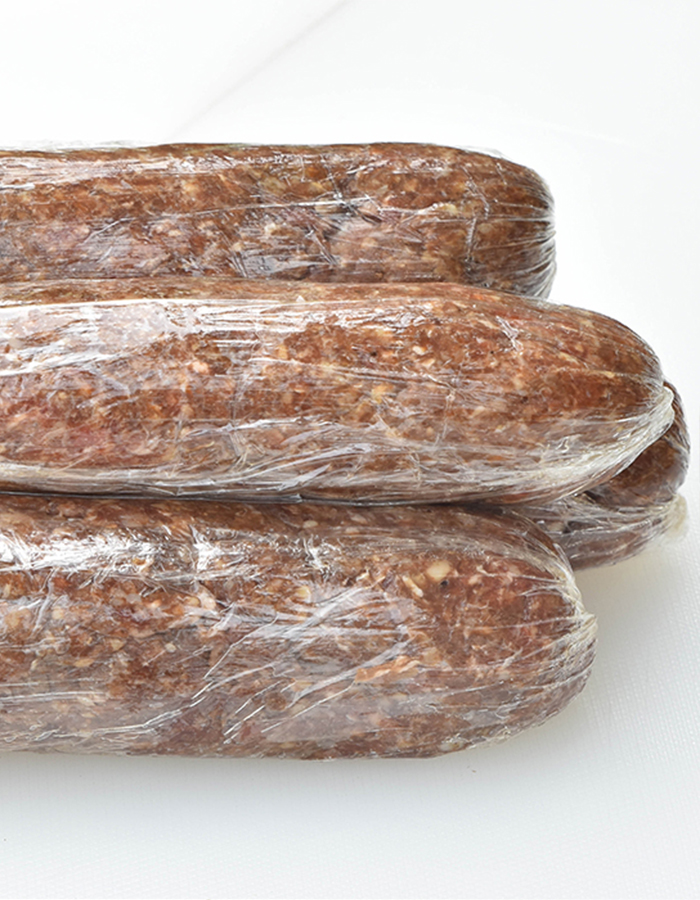
Making your own sujuk is a great way to create an incomparable result since you know exactly what went into your sujuk unalike the store-bought variety. It lets you season them to meet your own personal preference. Good sujuk is all about balance, balance the seasoning and balance the meat and fat.
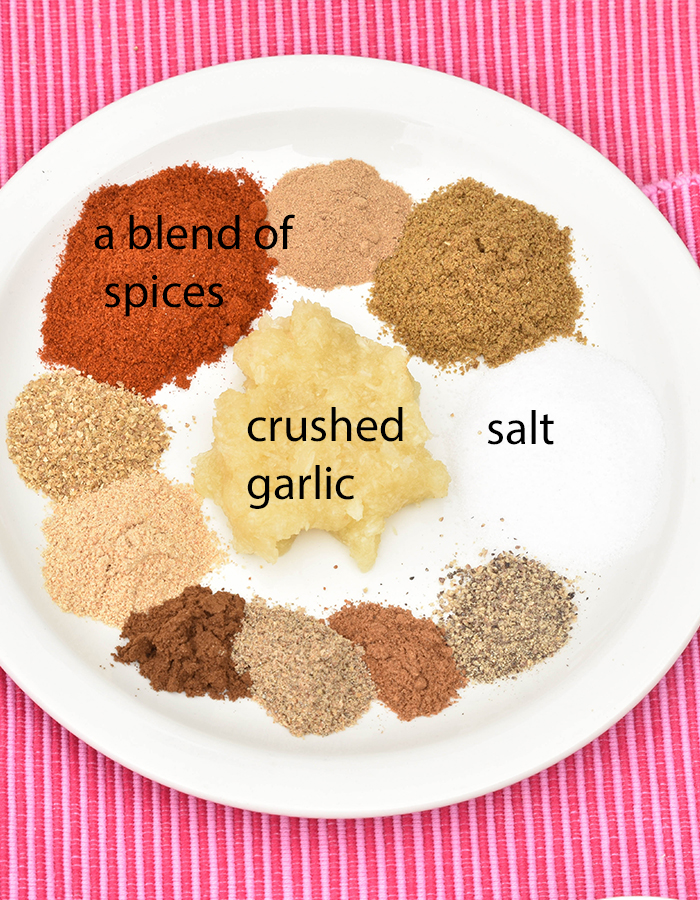
Making sujuk at home has often been considered as a tiresome job, most folks would buy their sujuk from butcheries, but I tell you it is an art that really is not so difficult as it sounds, especially with our simpified version.
What meat to use in homemade sujuk?
Use a high quality lamb (I recommend lamb shoulder) or beef shoulder, I like it with 30 percent fat, but you could go as high as 40 percent.
(I bought 1 kg lamb shoulder from my local butcher, and asked him to mince it for me.)
Can we make Lebanese Sujuk without any casings?
Traditionally sujuk are stuffed in beef or sheep’s casings, airdried for 2 days and hanged on a place away from sunlight. It is consumed in different ways. Here is a simplified homemade version that doesn’t need any special equipment. Since the tiresome part is stuffing them into casings, I skiped that step. We are neither curing the meat nor we are using a sheep’s casing, and the taste is simply great; just mix the meat, salt, garlic and spices, keep uncovered on a sheet pan for 24 hours in the refrigerator (that helps the meat to considerably dry out) which will eventually begin to hold together, give a quick stir every 5 hours, and then wrap in plastic wrap into sausage like forms and freeze, a very handy recipe.
How to test the seasoning of sujuk?
Sujuk making requires a good nose and taste buds. I have provided you with the seasoning I used: Cumin powder, black pepper, ginger powder, paprika, corriander powder, fenugreek powder, grated nutmeg, clove powder cardamom powder and salt. The end result was so satisfying, but your ingredient list is limited only to your liking. You can toss in as other spices as you’d like. To test the seasoning, take a walnut size piece of the mixture and cook to taste for salt, pepper and other flavor adjustments.
How to wrap the sujuk without casings?
Portion the meat to 5 equal mounds, take a one mound of the meat, shape it into a single sausage about two inches in diameter and place it on the near edge of the plastic wrap. Roll the sausage away from you, enclosing it in the wrap. Roll it tightly smoothing the shape as you go. Twist the ends tightly, do this several times to tighten the wrap, then place the wrapped sujuk (ends tucked underneath) on a tray for freezing. Repeat with the other 4. When it solidifies, place the wrapped sujuk in a plastic bag, label and date it, and store in the freezer until needed. The sujuk can be frozen for up to 3 months. I have provided you above with different ways on how to uses sujuk above. If you have other ways share them with us in the comment section. Watch the detailed video tutorial.
Tips to consider when making sujuk.
- You need a proper amount of fat, at least 30 percent — I have not yet met a low-fat sukuk that is delectable.
- Do not use old spices.
- Use fresh garlic, and avoid the ones with green sprouts.
- Refrigerating the seasoned raw meat for 24 hours, uncovered, would dry out the mixture, which is eventually what we are looking to.
Ways to eat sujuk:
A topping for your pizza
Slice the frozen sujuk and top it on your pizza, treat it just the way you treat pepperoni on pizza.
Sujuk sanwiches with tomato slices and cheese
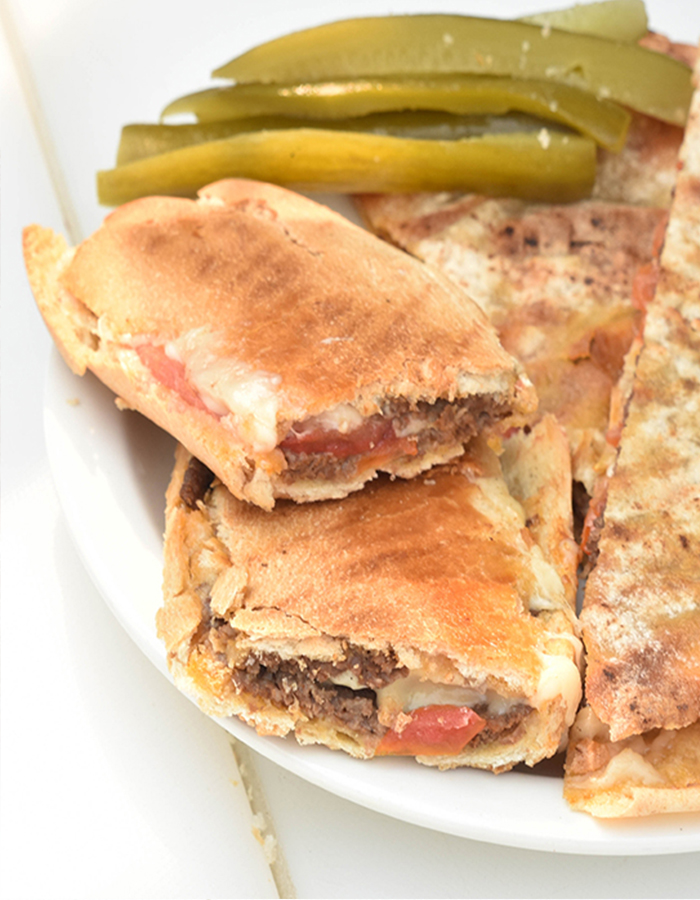
This sandwich takes me back to lazy afternoons where my mom would make a big mess of sujuk sandwiches for a quick lunch or dinner. these were my favorite. To make the pita pocket sujuk, you need Lebanese bread or pita bread that can be separated open to stuff the sujuk. Defrost the sojuk and spread a thin layer of the sujuk (use the back of a spoon to spread it all over the bread). Heat your panini press, and brush the griddle with oil using a low heat setting (about 200 degrees) transfer the stuffed bread to the heated panini press and grill for about 10 minutes until the meat is cooked. Check periodically, and pull open the pita, add thin slices of tomatoes and some cheese slices to your liking. Return the bread back to the panini, raise the heat setting and grill until you hear the sizzle of cheese on the grates, that’s a sure sign it’s melted, enjoy warm. You can also use baguette, hollow out the bread and stuff it with a thin layer of sujuk, and treat it they way you did with pita pocket sujuk.

Pinwheel Sujuk:
Separate a large pita bread into two halves, and use one half spread an even thin layer of sujuk (after defrosting) all over the bread, roll the sujuk and pita into a tight log. With a bread knife, cut the roll into 2 inches pieces. Heat oil to an adequate frying temperature and deep fry the rolls to golden perfection. Or alternatively, for a healthier approach, brush an oven sheet with oil or ghee and distribute the sujuk rolls. Brush the top with some ghee or olive oil and bake in a preheated oven to 200°C /400 °F, for about 12 to 15 minutes, serve them as an appetizer. Serve it with hummus.
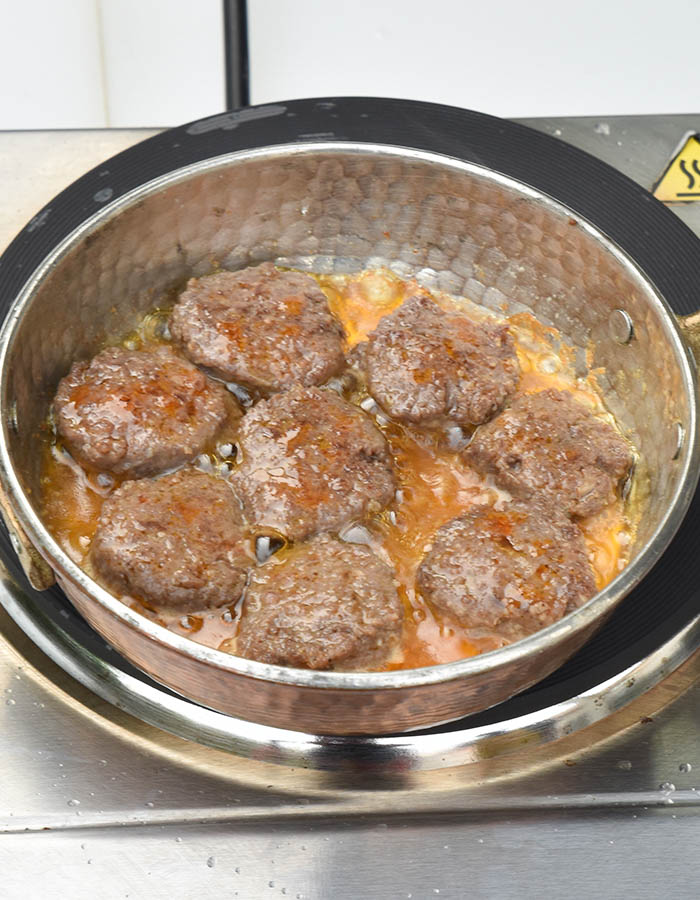
Coin slice the sujuk and saute with olive oil and butter
Remove the sujuk from freezer, unwrap and place it onto a cutting board, cut them diagonally to one inch thick, heat olive oil and butter in a skillet add the sliced sujuk (don’t crowd the pan) and cook over medium heat until well browned on both sides. Eat it with bread or serve it with fried eggs.

Sujuk Ragu:
Remove the sujuk from the freezer, and slice it to 1 inch-thick pieces. Heat a drizzle of sunflower oil in a pot, add the onion with some c to soften, add the sliced sujuk and some fresh diced tomatoes and bring everything to a boil. Reduce heat to low, cover up and cook until the tomatoes are stewed and the sauce in the pan thickens up, serve it with Lebanese bread or pita. By the way, you can use sujuk in your Bolognese sauce instead of minced meat, you will take your blognese to another level.
Looking for Lebanese meat based recipes, we got you covered.
Sujuk and hummus are soulmates, calling all hummus lovers, here is a restaurant-style recipe that you will love.


Description
Ingredients
- 1 kg/ 2lb 4 oz minced lamb from the shoulder 30 precent fat, beef can be used as well
- 8 large garlic cloves crushed
- 1 leveled tablespoon salt
- 1 teaspoon cumin powder
- 1 teaspoon black pepper
- 1/2 teaspoon ginger powder
- 2 teaspoons paprika
- 1/2 teaspoon coriander powder
- 1/2 teaspoon fenugreek powder an essantiel ingredient in sujuk
- 1/4 teaspoon grated nutmeg
- 1/4 teaspoon clove powder
- 1/4 teaspoon cardamom powder
- 1/2 teaspoon cayenne powder otional, you can omit it
- 2 tablespoos olive oil
Instructions
- In a large bowl, combine the minced meat, salt, garlic, cumin, black pepper, ginger powder, paprika, coriander powder, fenugreek powder, grated nutmeg, clover powder, cardamom powder and oil. Make sure everything is infused evenly together. Transfer the meat to a rimmed sheet and spread it to a thin even layer. Place it in the refrigerator, uncovered, on a shelf alone to avoide transference of flavor, yes please, uncovered for 24 hours in the refrigerator, give a quick stir ever 5 hours, have passed; keeping the meat unocovered will help the meat dry out which is exactly what we want.
- Portion the meat to 5 equal mounds, transfer one mound of the meat, to a piece of plastic wrap, shape it into a single sausage about two inches in diameter and place it on the near edge of the plastic wrap. Roll the sujuk away from you, enclosing it in the wrap. Roll it tightly smoothing the shape as you go.
- Twist the ends tightly, do this several times to tighten the wrap, then place the wrapped sujuk (ends tucked underneath) on a tray for freezing. Repeat with the other 4. When it solidifies, place the wrapped sujuk in a plastic bag, label and date it, and store in the freezer until needed. The sujuk can be frozen for up to 3 months. I have provided you above with different ways on how to uses sujuk above. If you have other ways share them with us in the comment section. Watch the detailed video tutorial.


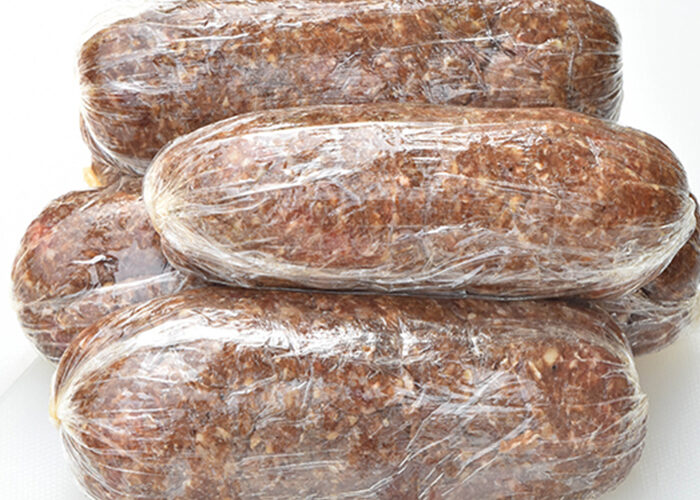
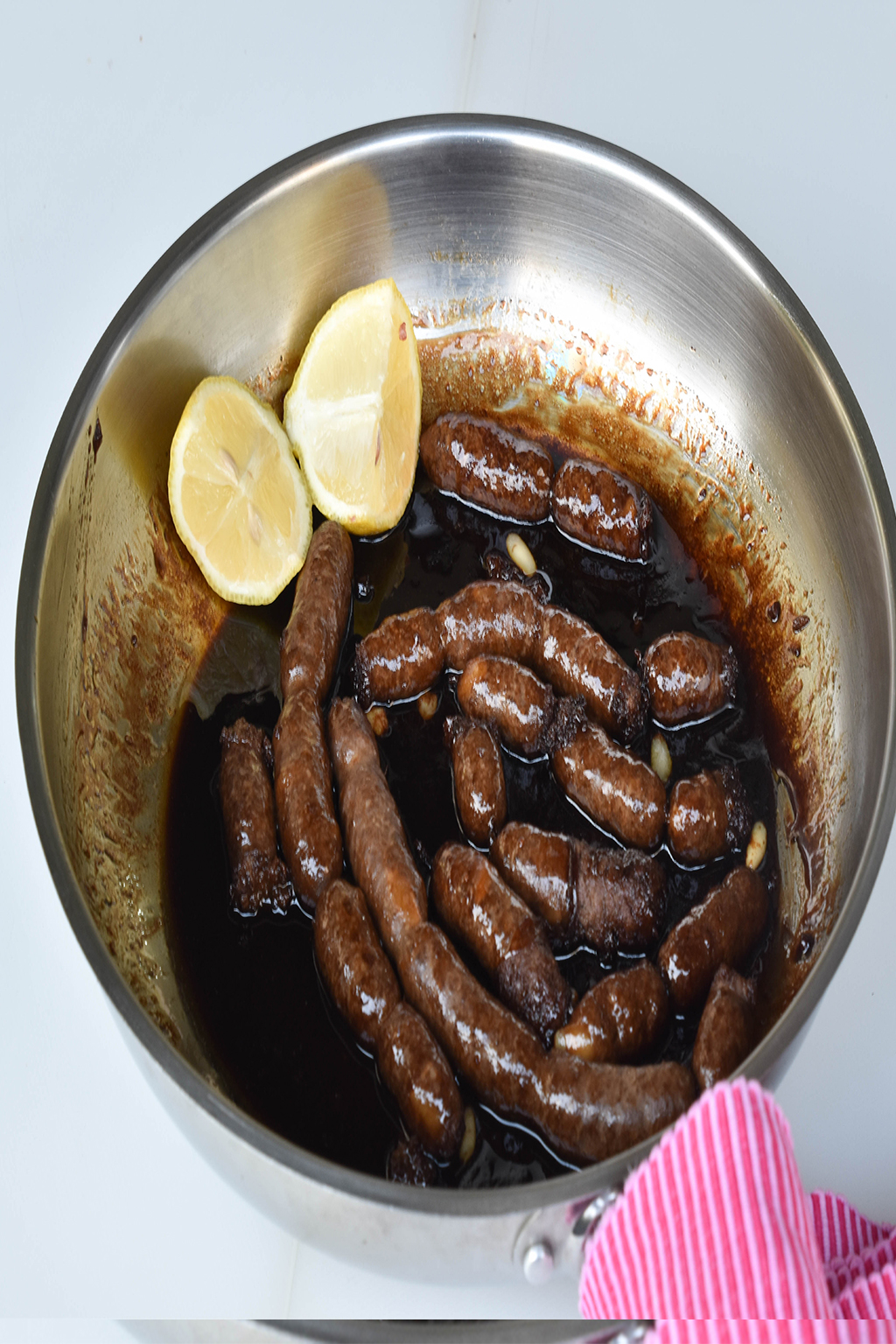
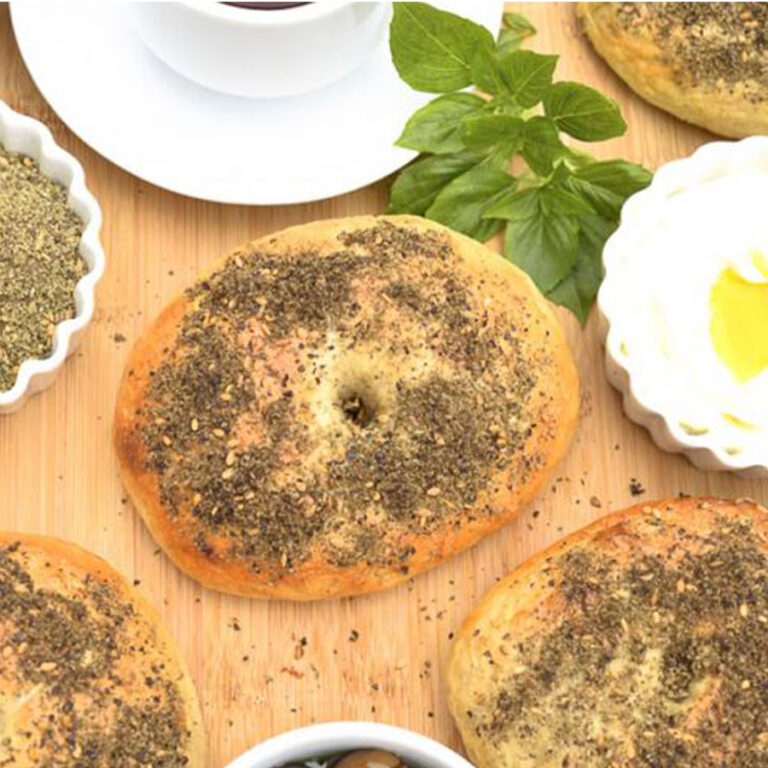
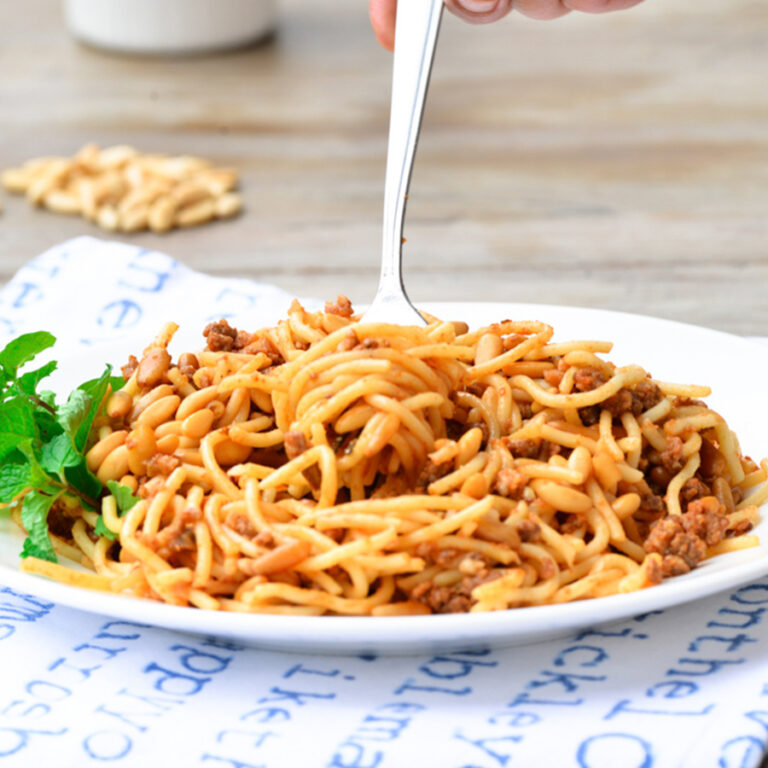
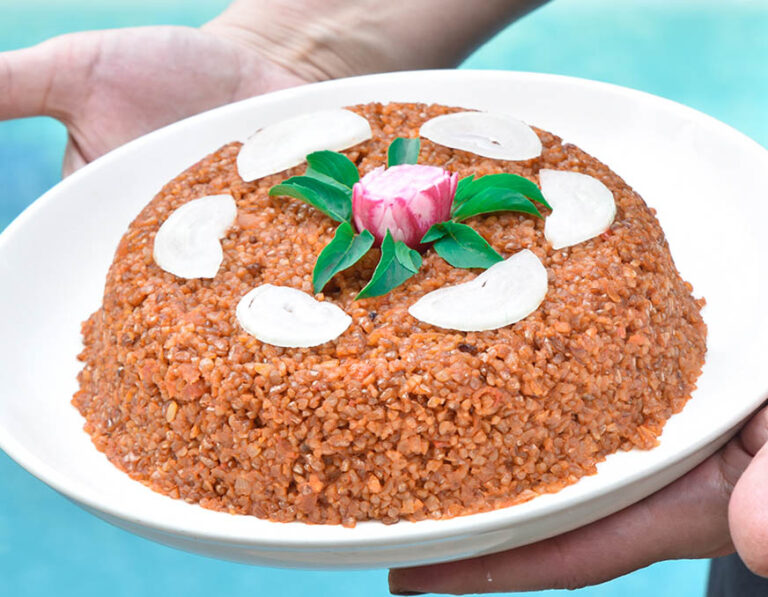
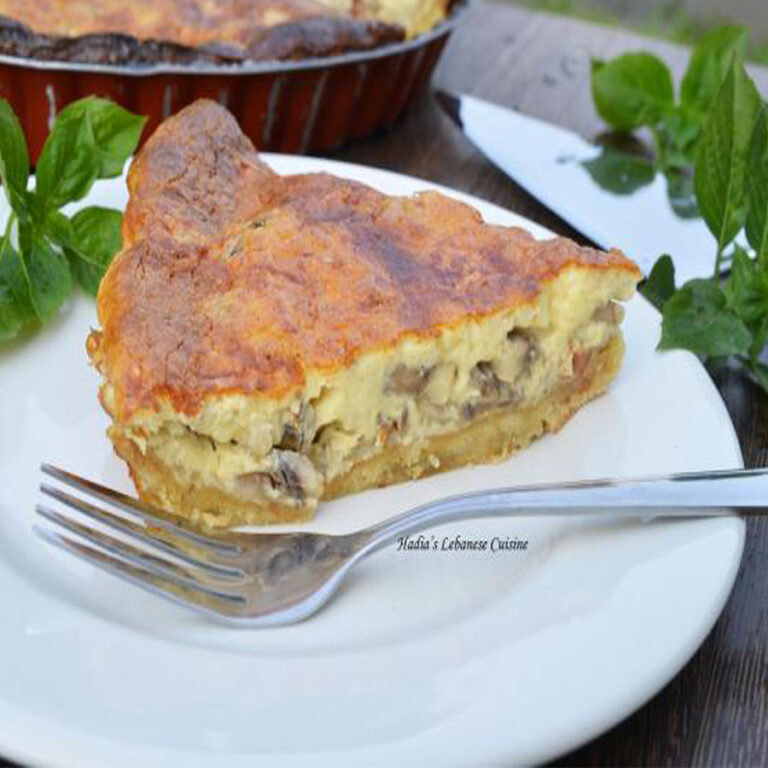




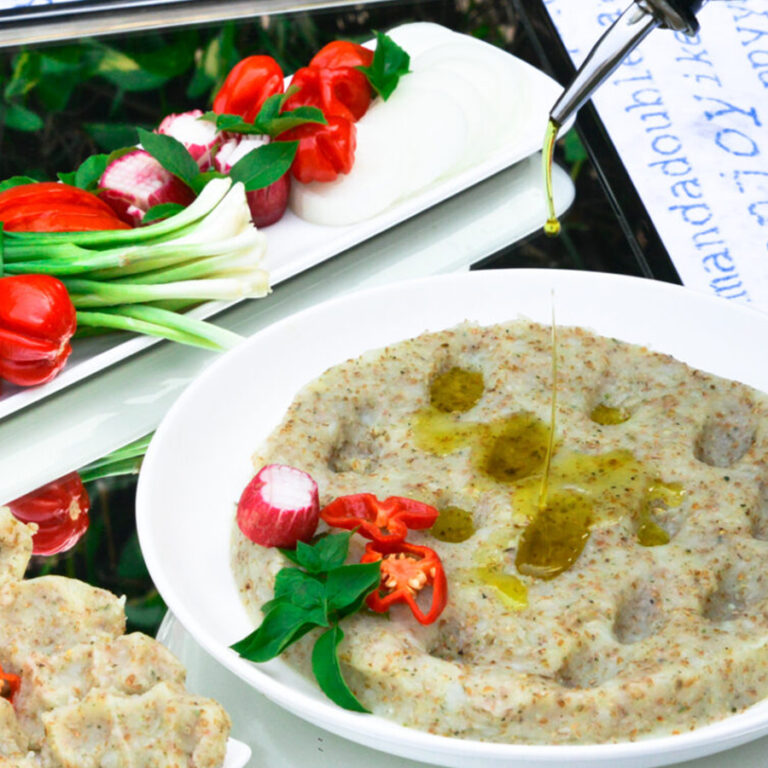



















2 Comments
I really like how easy you’ve made this homemade sujuk to prepare at home. Your spice blend is absolutely perfect and your easy step by step instructions are so helpful.